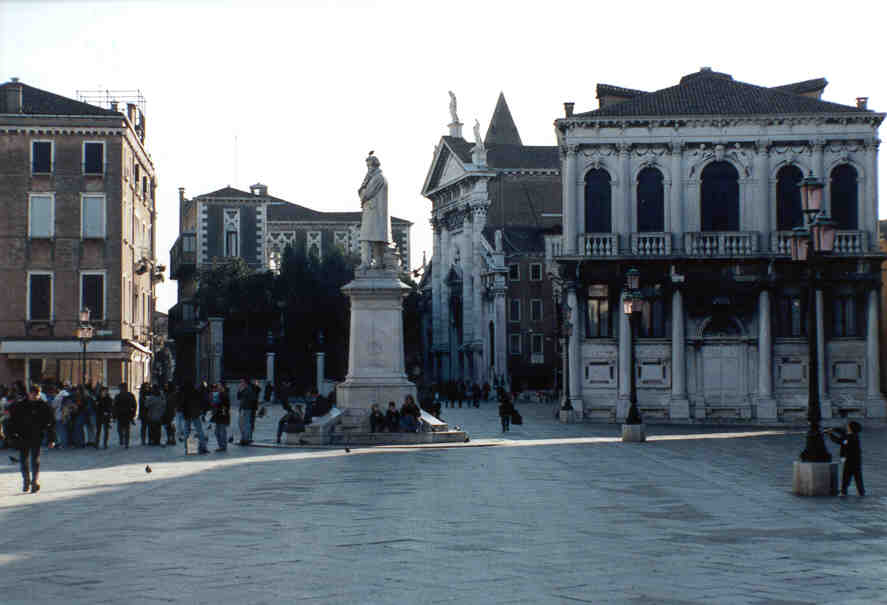|
Campo
Santo Stefano
Jpg:
David
W. Spracklen
View looking
east. The compo to the
north of the church S. Stefano and marked on this map as Compo S.
Angelo.
From:
Timeout.com
Campo Santo
Stefano is the largest
square in the sestiere after Piazza San Marco, and one of the most
cheerful,
with several pavement bars (including Paolin, renowned for its
pistachio
ice-cream). Until 1802, when part of the stand collapsed, this was
where
the corsa al toro bullfights took place. In the centre is a monument to
the Risorgimento ideologue Nicolò Tommaseo, whose studious
habits
are suggested by a pile of books rising to the level of his frock coat.
To Venetians he is known as `Cagalibri', the book-shitter.
Santo Stefano
is an Augustinian church,
rebuilt in the fourteenth century and altered in the fifteenth. The
façade
has a magnificent portal in the florid Gothic style. The large
interior,
with its splendid ship's keel roof, is a multicoloured treat, with
different
marbles used for the columns, capitals, altars and intarsia, and
diamond-patterned
walls, as on the Palazzo Ducale. On the floor is a huge plaque to Doge
Morosini (best known outside Venice for blowing up the Parthenon) and a
more modest one to composer Giovanni Gabrielli. On the interior
façade
to the left of the door is a Renaissance monument to Giacomo Surian by
Pietro Lombardo and his sons, decorated with skulls and festoons.
In the
Sacristy (open same hours
as the church; admission L3,000) are two tenebrous late works by
Tintoretto: The Washing of the Feet and The Agony in the Garden (The
Last
Supper is by the great man's assistants) and three fanciful works by
Gaspare
Diziani (Adoration of the Magi, Flight into Egypt, Massacre of the
Innocents).
There is also a kitsch modern crib in glass by Seguso.
If you take
the calle out of the
campo towards St Mark's (next to Häagen-Daz), you get
a good view from the first bridge of the apse of Santo Stefano, with a
canal passing underneath it. (Timeout.com)
Notes:
|




